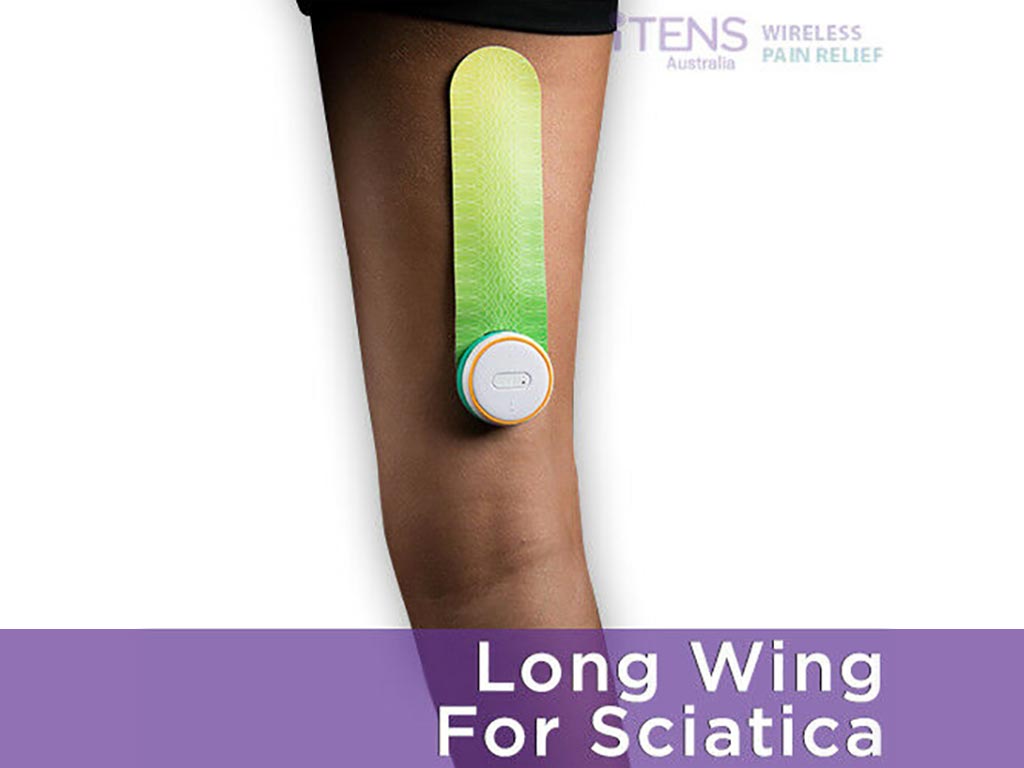
Transcutaneous Electrical Nerve Stimulation (TENS) is a type of therapy that applies mild electrical currents to the body. A TENS unit and sciatica are one of the main treatments of the device. It stimulates the affected nerves and causes triggers the body to start endorphin production. Hence, for many people with chronic pain, TENS therapy can help alleviate the symptoms naturally. In addition, TENS offers comprehensive relief for various types of pain.
Sciatica is one of the chronic conditions that many people experience. It is a type of nerve pain that radiates from the lower back and down one or both legs. Thus, people with this condition often experience difficulty in performing daily activities. For this reason, many seek pain management with no long-term side effects or risks like TENS. This article will explore the efficacy of TENS on sciatica and how it can help alleviate the pain.
TENS Unit and Sciatica – What It Is?
Sciatica is a condition that causes pain, numbness, or tingling along the sciatic nerve in the lower back. Thus, TENS unit and sciatica treatment are important for individuals with chronic pain. A TENS machine is a portable device that emits low-voltage electrical pulses through electrode pads placed on the skin. This provides a drug-free and non-invasive method of pain relief.
The TENS device has a set of electrode pads connected to a control unit. Traditional machines use wires, while some modern versions use wireless connections. In wireless TENS, the device incorporates Bluetooth technology to connect to a remote controller or smartphone. This makes the unit more compact and lightweight.
Additionally, TENS machines have customisable settings, allowing users to adjust the therapy depending on their sciatica pain symptoms. Therefore, it can provide the right amount of stimulation without being overpowering. Moreover, many units offer preset modes for sciatica and other pain conditions. Selecting a program will automatically start the treatment without adjusting the parameters manually.
Causes of Sciatica Pain
- Herniated disc – the soft inner core of a disc pushes out through a tear, irritating nearby nerves.
- Spinal stenosis – a narrowing of the spinal canal, often due to aging.
- Piriformis syndrome – the piriformis muscles in the buttock region spasms, irritating the sciatic nerve and causing pain.
- Spondylolisthesis – when a vertebra slips out of place and presses on the nerve roots.
- Degenerative disc disease – the gradual wear and tear of the disc in the spine.
- Bone spurs or growths – abnormal tissue growths or bony projections that develop in the spine.
- Trauma or injury – a sudden impact that damages the spine or surrounding tissues.

TENS Unit and Sciatica – How It Works to Alleviate the Pain
The principle behind TENS unit and sciatica pain relief is based on the effects of electrical stimulation on the nerves. The device sends low-voltage electric signals through the electrode pads, which stimulate nerve pathways throughout the body. This helps to reduce pain in two ways: blocking pain transmission and releasing endorphins.
The electrical pulses cause the spinal nerves to close the pathways of pain signals, hindering them from reaching the brain. Furthermore, it triggers the production of endorphins, the natural painkillers. Endorphins also help to reduce stress and improve the overall sense of well-being. A TENS machine may also reduce inflammation in the affected area, leading to further relief.
TENS machines produce tingling or a pleasant sensation similar to a massage. This can also help the muscles to relax and ease soreness. Similarly, the tingling sensation serves as a distraction for the brain to perceive pain. Moreover, the intensity of the electrical stimulation is adjustable according to individual comfort or tolerance level.
Understanding Low and High Frequencies
Frequency or pulse rate is the number of electrical pulses per second. A TENS unit generally has two types – low and high. Low-frequency stimulation ranges between 1-10 Hz. This provides mild soothing pulses, also referred to as acupuncture-like TENS. Additionally, it is believed to be suitable for chronic pain as the effects tend to wear off longer.
High-frequency TENS ranges between 50-150 Hz. The impulses tend to be stronger and more intense. This works better for acute pain as it produces a quicker result. Furthermore, high-frequency TENS can reach deeper into the tissue, providing relief in areas that are not easily accessible.

TENS Unit and Sciatica – How to Use the Device
A TENS unit and sciatica treatment are relatively simple and easy to operate. However, consulting with a health professional is advisable to ensure it is a suitable pain relief method. TENS therapy may not be advisable for people with heart problems, epilepsy, cardiac pacemakers, and pregnant women.
First, place the electrode pads on the pain area to start the treatment and activate the device. Next, set the frequency and pulse width to the desired or recommended level. It is best to start at the lowest intensity and gradually increase until the pulses feel strong but comfortable. Keep on adjusting the setting until it gives the most effective relief.
For people who prefer a more convenient method, many TENS machines have a preset mode for sciatica. Simply select the specific program to start the treatment. In addition, set the treatment session for 30 to 45 minutes. After the session, turn off the device and remove the electrodes from the skin. Avoid prolonged use to prevent skin irritation or further nerve or tissue damage.
Proper Pad Placement
The pad placement for sciatica relief depends on where the nerve irritation or compression occurs. Generally, position one pad on either side of the painful area. For lower back pain, place the electrodes along both sides of the spine or the buttocks. Also, place the pads along the sciatic nerve pathways of the affected leg.
For pain that radiates downward, some people prefer to use an elongated pad like the iTENS long strip wings. This type of pad is suitable for treating sciatic pain in the legs. However, avoid electrode placement on broken skin or areas with skin irritation, redness, or rashes.
Conclusion
Sciatica is one of the common painful conditions that affect many people. It can come from various reasons and cause mild to debilitating pain. TENS therapy is a safe, non-invasive, and drug-free method to relieve pain. The TENS unit and sciatica relief work by sending electrical impulses to stimulate the nerves. This helps produce more endorphins and interrupts the transmission of pain signals to the brain. As a result, it can alleviate the symptoms without using medicines.
A TENS machine may utilise low and high frequencies for therapeutic effects. However, the modulation of settings depends on individual conditions. Thus, it is crucial to find the setting that works best. Also, ensure proper pad placement to maximise the effectiveness of TENS therapy. For best results, consult a health professional for advice. With the proper usage of TENS, people with sciatica can do their daily routine without the hindrance of pain and ultimately improve their quality of life.




















